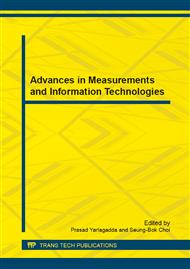p.467
p.472
p.476
p.480
p.489
p.496
p.502
p.506
p.512
Research on the Methods of Identifying Key Node Based on Classical Networks
Abstract:
Identifying the most important node is a research hotspot in complex networks. For different types of network there are different methods to cope with. In this paper, we use five methods: degree method, betweenness method, node contraction method, node importance evaluation matrix method, K-shell decomposition method to identify the key node and compare the effects through SIR propagation model. In the simulation experiments, we use three artificial networks: random network (ER), small-world network (NW) and scale-free network (BA). The experimental results show that the nodes identified by node importance evaluation matrix method and K-shell method are more important. Besides, in BA the infection velocity is faster and the infection scale is larger than in ER and NW.
Info:
Periodical:
Pages:
489-495
Citation:
Online since:
February 2014
Authors:
Keywords:
Price:
Сopyright:
© 2014 Trans Tech Publications Ltd. All Rights Reserved
Share:
Citation:


